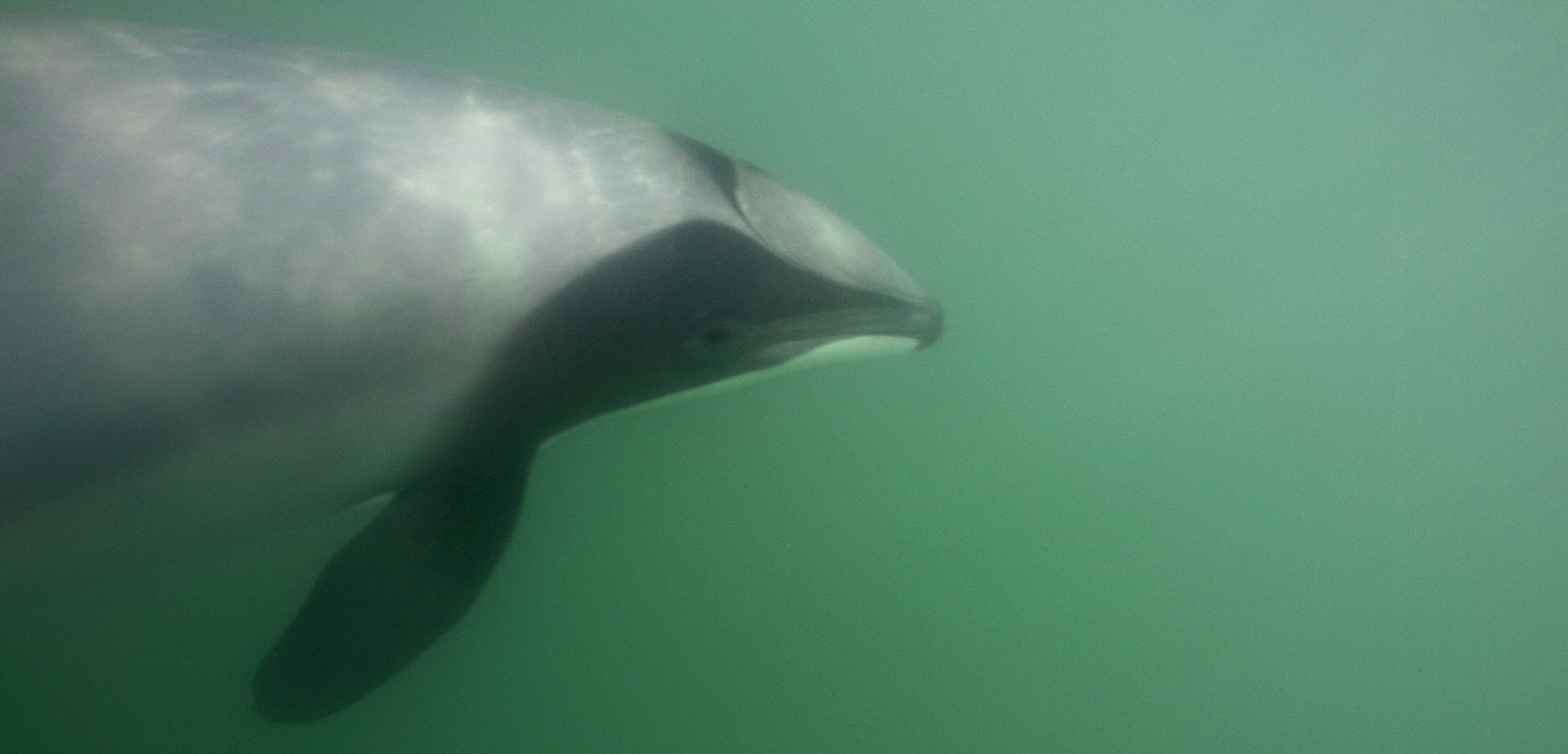The Last Gasp of the Māui Dolphin
Critics say the New Zealand government’s proposed conservation plan falls short of what is needed to ensure the survival of these dolphins.
Article body copy
The Māui dolphin is the smallest dolphin in the world. It is also one of the rarest. A subspecies of the Hector’s dolphin, the Māui lives in only one place—the shallow coastal water off the west coast of New Zealand’s North Island. To the Māori, Māui and Hector’s dolphins are considered taonga—highly valued treasures.
Both are also highly in danger of becoming extinct. Hector’s dolphins number about 15,700. The estimate for Māui dolphins is drastically lower: 63.
The dolphins regularly become tangled in gill and trawl nets used by commercial fishers. In February 2018 alone, five Hector’s dolphins were killed by commercial set-nets. Most scientists think unsustainable rates of by-catch are to blame for the dolphins’ dwindling populations. In a recent paper, scientists predict that without drastic action, Māui dolphins will be extinct within 30 years.
On June 17, New Zealand’s Ministry for Primary Industries and Department of Conservation released revisions to their plan to save the dolphins, known as the Threat Management Plan, for public consultation. First drafted in 2007, the plan is undergoing its first update for Hector’s dolphins and its second update since 2012 for Māui dolphins. However, proposed changes have been met with widespread criticism from local and international NGOs, scientists, and the public.
Elisabeth Slooten, a zoologist at the University of Otago in New Zealand who has been studying Hector’s and Māui dolphins for more than 30 years, says the government’s proposals are insufficient to save the dolphins from extinction. She says the proposals are full of misinformation and based on science that is fundamentally flawed.
For instance, the report suggests the main cause of dolphin deaths is toxoplasmosis, a parasitic disease spread through cat feces washed into the ocean by storm runoff. The report suggests the disease kills 16 times more Māui dolphins and six times more Hector’s dolphins than commercial fisheries. However, scientists, including Slooten, say this claim is inconsistent with field reports. They say the government report relied on flawed calculations and a very small number of dolphins. Slooten says the harm of toxoplasmosis was completely overblown to deflect from the real issue: overfishing.
“In so many ways, the Threat Management Plan that went out for public discussion is so misleading,” Slooten says. “[The government] is taking a kind of maximum sustainable yield approach. They’re saying, what’s the maximum number of dolphins we can catch and still be able to pat ourselves on the back and say they haven’t gone extinct yet?”
The plan also fails to propose any protective measures for some prime dolphin habitats, such as on the south and east sides of Banks Peninsula, well-documented hotspots for Hector’s dolphins. By failing to protect these regions, fishers will simply move from prohibited waters to these areas and the levels of by-catch will continue unchanged, Slooten says.
On August 19, Greenpeace New Zealand and World Animal Protection New Zealand delivered a petition with 55,000 signatures to Minister of Conservation Eugenie Sage. Aligning with recommendations made by the International Union for Conservation of Nature and the International Whaling Commission, the petition calls for a ban on all net fishing in water less than 100 meters deep. It also demanded a stop to seabed mining, oil drilling, and seismic surveying. In addition to the petition, the government received over 13,000 responses to the proposed plan.
Minister of Fisheries Stuart Nash says the government “heard a lot of perspectives through the consultation.”
“It is clear that people care deeply about the need to find a solution to the range of threats facing these mammals,” he says.
Fisheries New Zealand and the Department of Conservation will analyze the submissions and determine the best path forward. But time is of the essence. “Every minute that a species like Māui spends at that population size is a risk in and of itself,” says Slooten. “Anything could happen. And it could happen quickly, and we could lose them—literally any minute.
“Māui dolphins are literally teetering on the brink of extinction.”

